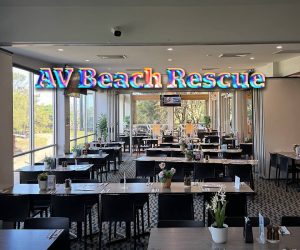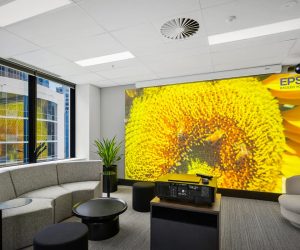
The Birth of the Beam
The true history of the modern, lightning-fast, pencil-thin moving beamlight.
Text:/ Marcus Pugh
Images:/ Courtesy of Clay Paky
In the past few years there has been one dominant image in all the ‘big lighting’ shows: beams. While dominant beams of light have been around since long before the first use of aircraft landing lights (ACLs) on a stage show (rumour has it that it was a Little Feat tour around 1973, but like most things from that period, details are foggy), recent times have seen beams taken to a new level of brightness and versatility. This trend in lighting design has primarily been driven through the development of a new class of fixture, and by one company in particular that introduced this new breed of beamlight into its range, to be followed swiftly afterward by many others.
According to Davide Barbetta, Clay Paky’s marketing production manager, the Italian luminaire manufacturer, was hoping there might be a market among contemporary lighting designers for this classic rock ’n’ roll effect and, decided to rethink the ACL and recast it in a modern role. This was how the modern Beam was born.
You only need to look at the gear list from events like Eurovision or any of the large, televised award ceremonies or arena and stadium touring acts, to get an idea of just how popular these luminaires have become. We have seen moving lights in the past that were designed to shine as a moving beam fixture, but none that combined the bright near-parallel beam output with the effects like gobos, prisms and frost. The main advantage of these fixtures is their concentrated ray of light through atmospheric effects such as haze and fog coupled with the ability to move it rapidly in mid-air to create ‘aerial effects’. These beam lights have further highlighted the need for good haze coverage throughout a venue, but that’s a topic for another day.
FIRST GLIMPSES OF THE BEAM
In 2007, off the back of the popularity of their Alpha range of moving heads, Clay Paky started to develop a new type of moving head: the Beam. This meant Clay Paky had to rethink optics which needed to be fundamentally different from any previously conceived for spots or wash lights — while still using the same light source. The team at Clay Paky knew that to achieve this ‘ACL’ type of beam they had to concentrate as much light into creating a thick, ‘almost solid’ shaft of light coming off the lens. The first fixture of this type to be developed was the Alpha 300 Beam, which first saw the light of day at the Italian ShoW-Way production technology show in June 2008. While the 300 beam didn’t take off here in Australia, it certainly had industry tongues wagging with its 8° beam angle producing a tube of light that rivalled the intensity of 1200W profile or spot movers. Clay Paky obviously knew that they were onto a winning formula because they were already five months into the development of the Alpha Beam 1500 which launched in September 2008 at the PLASA show in the UK. If people thought the 300 put out a powerful beam, the 1500 was in a whole new league, blowing away 4kW fixtures in shootouts.
By the time PLASA 2008 had wrapped up, the other lighting manufacturers were certainly paying attention to what the Italians were up to. The 1500 Beam was followed up with the launch of the Alpha Beam 700 in Germany at Prolight & Sound in April 2009. Unbeknownst to everyone, the best was still to come. While designers and production companies were still getting used to these new weapons in their design arsenal, the boffins at Clay Paky had meanwhile started work in January 2010 with the new 189W MSD Platinum 5R from Philips, an extremely short arc lamp with an integrated reflector. This development was to become one the biggest leaps forward in lighting technology since LEDs, and turned out to be the next ‘must-have’ fixture.


THE BEAM GOES PLATINUM
Clay Paky wasn’t the first to use the MSD Platinum 5R, that was American DJ with its Vizi Beam 5R which was put out to compete with the Alpha Beam 300. When Philips first released the Platinum 5R they suggested it would be used with a special optical device called an ‘Integration Tunnel’ which is essentially a tube with reflective interior walls designed to intensify and direct the light, and this was adopted by American DJ. The team at Clay Paky were not content with just following the ‘instructions’ that came with the lamp, and given their well-deserved reputation over 35 years for quality optics, thought they would be able to get more out of this little 189W lamp. Barbetta explains: “We designed a completely different optical system, featuring high quality ‘corrected’ lenses placed at the focal point, instead of Philips’ Integration Tunnel. These special optics, in combination with the Philips integrated lamp and reflector assembly, generates a homogeneous, low-aberration, parallel beam with an astonishing brightness.”

THE BIRTH OF THE SHARPY AND ALL ITS NEW-FOUND FRIENDS
This new optical system became the Sharpy: the fixture which has been featured on more gear spec lists than any other since its release at PLASA 2012. The Sharpy has a solid beam, which looks like you could reach out and hold onto it, and outperforms profile and spot movers with 1500W lamps. Clay Paky was also able to keep the fixture compact and lightweight, which means that it’s super-fast too. The Sharpy’s optical system has a beam angle of just over one degree, meaning that even over long throws it stays tight and ‘solid’. If you look closely at the beam, it actually crosses itself after the front lens (hence the big warning sticker on the Sharpy’s arm). Clay Paky immediately filed a patent application for this new optical system. Barbetta again: “The overall superiority of the Sharpy in terms of light-output and beam clarity when compared to other fixtures using the same light source is the result of two factors: the very short-arc of the Philips lamp, and the high-performance optical system designed by Clay Paky.” Along with all this output, feature set and speed Clay Paky have also managed to produce a fixture that is also robust and stand up to rigours of a life on the road.
Due to the Sharpy’s popularity we have seen a positive blooming in the field of lower-wattage, light-weight beam fixtures, such as the Robe Pointe, the Elation Beam 5R, Acme XP-5R Sabre. And then of course there have been the usual crop of blatant copies — the true acknowledgement of a fixture’s success.
What Lighting Designers and users have said about Clay Paky Beam Lights:
The Alpha Beams allow me to use 50% of the number of regular spot fixtures. So if I had 100 spot fixtures I would aim for 50 Beams. The Beam has become a light that I cannot design a show without.
Baz Halpin, lighting designer
We’re having a lot of fun with the Sharpys. Sometimes we use no colour, sometimes deep colour and sometimes ballyhoo. We feel we’ve found the right balance. The Sharpys are proving to be rugged and reliable on the long tour schedule. The crews tell me they‘re pretty bulletproof and are working great every day.”
Jeff Ravitz, lighting designer for Bruce Springsteen Tour
The Clay Paky Beams were tremendous, adding brilliant punches of colour big enough for one of the biggest landmark events in one of the most famous locations in the world.
Jerry Appelt, LD for Victory Day Parade in Moscow & Eurovision Song Contest 2011/12
The Sharpys seem to be ideally suited to projects where power, brightness and optical efficiency is required.
Al Gurdon, lighting designer for Madonna (Half-time Superbowl Show 2012)
The Alpha Beam 1500 blew away the 4K unit we were testing it against at the shoot-out. Optically, the 1500W beam turned out to be more visible than the 4000W beam!”
Koert Vermuelen, LD for Singapore Youth Olympic Games
We never see them in the shop — they’re always out. Sharpy is a very robust special effects unit, and we’ve loved them since we bought them.
Richard Lachance – Director Solotech (Canada)
I had used Sharpys for the first time in England and was really impressed with them, so it was natural to bring them in on these four shows. With Sharpys, the light goes on forever. These shows were very much about beams: that old-school Genesis look from the early ’80s with the green beams.
Nick Whitehouse, LD for Beyonce World Tour
I am a big fan of the Alpha Beam; it has brought the ACL feel back into shows with colour, beams and movement thrown in for good measure — a lighting designers dream!
Dave Hill, lighting designer
The Clay Paky Alpha Beam range has brought a unique new tool to long-throw applications and has re-energised the air and atmosphere around many TV and live events.
Durham Marenghi, lighting designer












RESPONSES